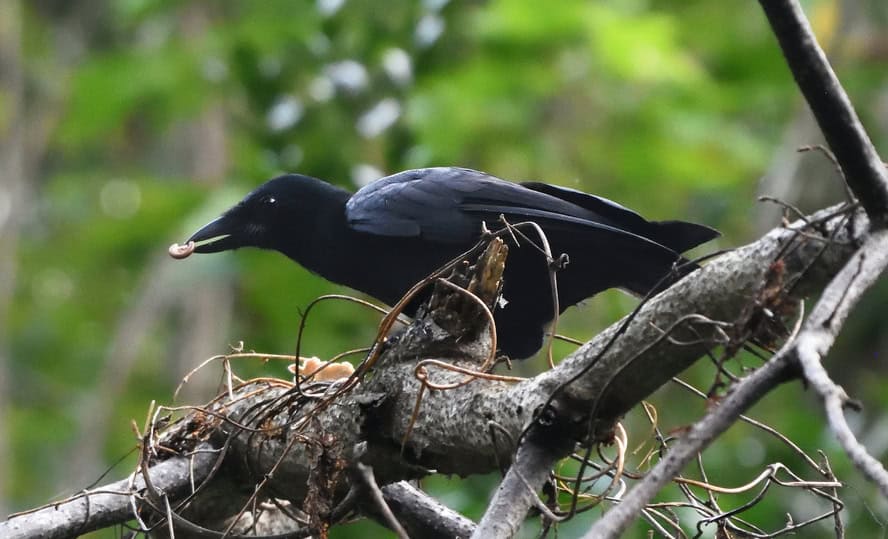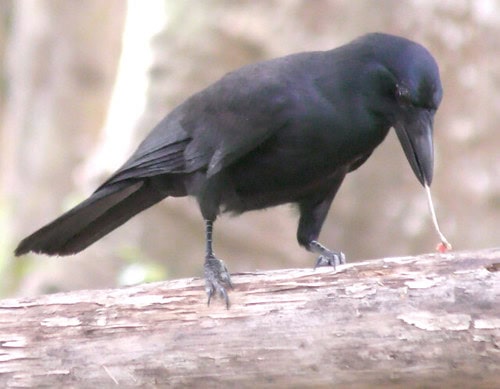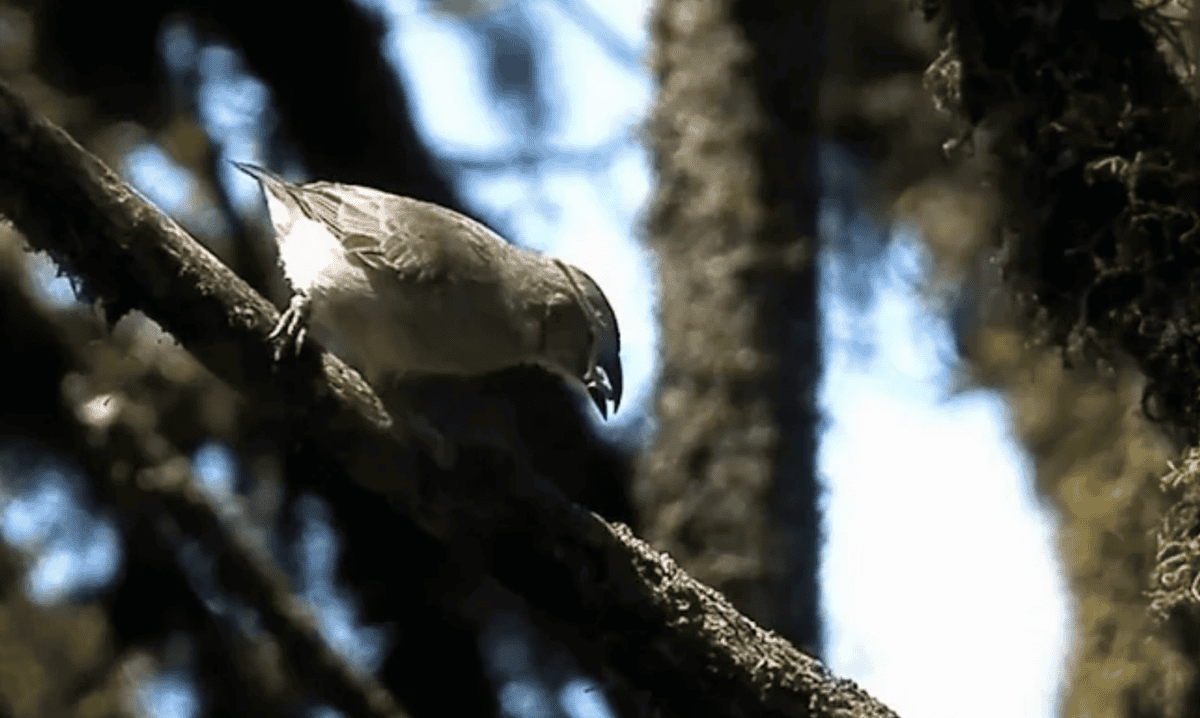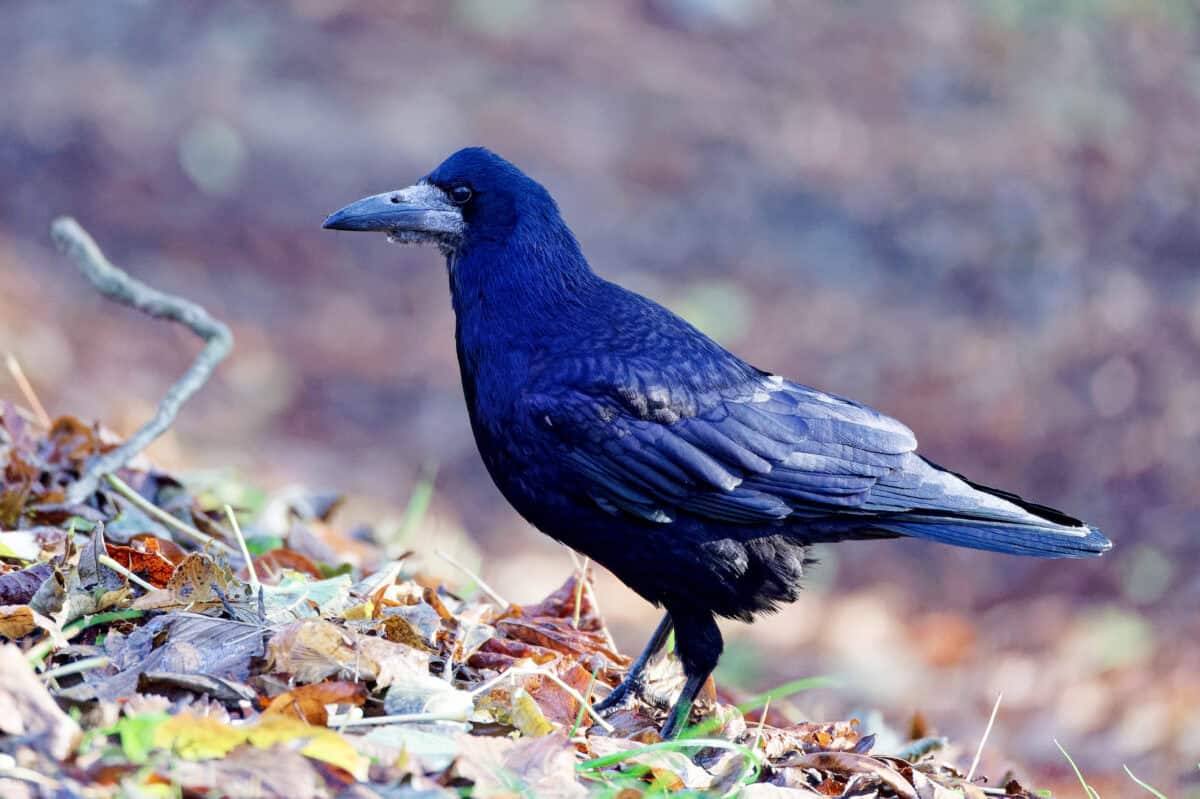In the avian world, intelligence manifests in remarkable ways that continue to surprise scientists and bird enthusiasts alike. While tool use was once considered a uniquely human trait, research over the past few decades has revealed that several bird species not only use tools but employ them with sophistication that rivals primates. Recent studies have uncovered even more complex tool-using behaviors than previously documented, challenging our understanding of avian cognition and evolutionary development of intelligence. From crafting specialized implements to solving multi-step problems, these feathered engineers are demonstrating cognitive abilities that blur the traditional lines between human and animal intelligence.
Corvid Craftsmanship: The New Caledonian Crow

The New Caledonian crow (Corvus moneduloides) stands as perhaps the most accomplished avian tool-maker discovered to date. Native to the Pacific island of New Caledonia, these birds manufacture tools with astounding precision. They craft hooked tools from twigs by carefully selecting branches, stripping the leaves, and carving a functional hook at one end. What makes this behavior particularly remarkable is that researchers have discovered these crows actually maintain a “toolkit” of different implements, selecting specific tools for specific tasks. They even create different types of tools for different purposes, showing an understanding of tool functionality that was previously thought to require human-level abstraction. Recent research has revealed these crows even modify their tools based on the specific task at hand, bending wires into hooks when straight tools won’t suffice.
Sequential Tool Use in Hawaiian Crows

The ‘Alalā, or Hawaiian crow (Corvus hawaiiensis), has demonstrated equally impressive tool-using abilities. Though extinct in the wild since 2002, captive populations continue to display natural tool-using behaviors without being taught. What’s particularly noteworthy about these birds is their capacity for sequential tool use – employing one tool to obtain another, which is then used to reach food. This meta-tool use represents a cognitive leap that requires understanding causal relationships across multiple steps. In controlled experiments, Hawaiian crows successfully used shorter sticks to reach longer sticks that were otherwise inaccessible, and then used the longer sticks to extract food from experimental apparatuses. This ability to plan ahead and understand the utility of intermediate steps in problem-solving suggests a level of abstract thinking previously underestimated.
Cockatoos and Multi-Component Tool Construction

Goffin’s cockatoos (Cacatua goffiniana) have stunned researchers with their ability to create multi-component tools from scratch. Unlike New Caledonian crows, which have likely evolved their tool-making abilities over thousands of years, cockatoos appear to be innovating these behaviors spontaneously. In laboratory settings, these birds have demonstrated the ability to craft tools by combining separate components to create functional implements. They’ve been observed taking small sticks, splinters, or pieces of cardboard and joining them together to create longer, more effective tools. The remarkable aspect of this behavior is that there’s no evidence that wild cockatoos regularly use tools, suggesting that these birds possess a capacity for creative problem-solving that can be deployed when needed, rather than an instinctual, evolved behavior.
The Woodpecker Finch’s Specialized Techniques

Among Darwin’s finches in the Galápagos Islands, the woodpecker finch (Camarhynchus pallidus) has evolved a specialized form of tool use that compensates for its physical limitations. Unlike true woodpeckers, this species lacks the long tongue needed to extract insects from tree cavities. Instead, they use cactus spines or twigs as extensions of their beaks to probe for hidden insects. New research has revealed that these finches don’t simply use whatever tools are available – they actively modify their tools by shortening them to appropriate lengths and stripping side branches that would interfere with the tool’s function. More complex than initially thought, woodpecker finches have been observed spending considerable time selecting and preparing just the right implement for a particular feeding challenge, suggesting a sophisticated understanding of the relationship between tool properties and task requirements.
Cognitive Flexibility in Kea Parrots

The kea (Nestor notabilis), a mountain parrot native to New Zealand, has demonstrated remarkable cognitive flexibility in tool use. Rather than relying on innate, specialized tool-using behaviors, keas display opportunistic innovation when faced with problems. In controlled experiments, keas quickly learned to use tools they had never encountered before to access food rewards. What makes their tool use particularly sophisticated is their ability to rapidly adapt to changing conditions. When researchers modified experimental setups, keas promptly adjusted their strategies, suggesting they understand the causal principles behind their tool use rather than simply following learned routines. Most impressively, keas have demonstrated collaborative tool use – working together to manipulate tools that would be difficult for a single bird to manage, revealing social dimensions to avian tool use previously unrecognized.
Palm Cockatoos and Percussive Instruments

The palm cockatoo (Probosciger aterrimus) of Northern Australia and New Guinea has been documented using tools in a surprisingly musical context. Males craft drumsticks from branches, carefully selecting, trimming, and shaping them to create optimal percussion instruments. They then use these sticks to drum on hollow trees as part of their courtship displays, creating consistent rhythmic patterns. This represents the only known example of a non-human animal manufacturing a sound tool specifically for acoustic communication. Research has shown that individual cockatoos develop personal drumming styles and rhythms, suggesting a cultural component to this tool use. The crafting process is deliberate and precise – birds will reject branches that don’t meet their standards and will spend considerable time perfecting their instruments, displaying an aesthetic dimension to tool use previously unrecognized in birds.
Egyptian Vultures and Strategic Stone Use

The Egyptian vulture (Neophron percnopterus) has developed a specialized form of tool use centered around stones. These birds use rocks as hammers to crack open ostrich eggs, which have shells too thick to break with their beaks alone. What recent research has revealed is that this behavior involves much more complexity than simple object manipulation. Vultures carefully select stones of appropriate size and weight for the task, and younger birds appear to learn the technique through observation of experienced adults. Most impressively, some populations have been observed carrying stones considerable distances to nesting sites where they maintain collections of effective “hammers” – essentially creating caches of tools for future use. This foresight suggests planning capabilities previously underestimated in these scavengers.
Tool Use Transmission and Cultural Learning

One of the most fascinating aspects of avian tool use is how these behaviors are transmitted between individuals. Recent studies have documented clear evidence of cultural transmission of tool-using techniques in several species. New Caledonian crows, for example, appear to have regional “traditions” of tool manufacture, with different populations favoring different designs and techniques. Juvenile crows learn from their parents through a combination of observation, guided learning, and practice. Researchers have identified what appears to be teaching behavior in adult crows, who will demonstrate tool use to youngsters and provide progressively more challenging opportunities for practice. This cultural dimension to tool use suggests that birds are capable of maintaining and enhancing technological traditions across generations in ways previously thought unique to humans and some primates.
Blue Jays and Unexpected Tool Innovation

Blue jays (Cyanocitta cristata), common birds across much of North America, have recently been documented using unexpected forms of tool use. In laboratory settings, blue jays learned to use strips of newspaper as tools to reach food that was otherwise inaccessible. What makes this behavior remarkable is that it appears to be completely innovative – there’s no evidence that wild blue jays naturally use tools. When presented with paper, these birds spontaneously tore it into strips of appropriate width and length to serve as reaching tools. Further experiments revealed that blue jays could mentally assess whether a piece of paper would be suitable for a particular task before attempting to use it, suggesting they possess the ability to plan and evaluate tool effectiveness before taking action. This indicates that tool use capabilities may be more widespread among intelligent birds than previously recognized, existing as latent cognitive abilities that emerge when circumstances demand creative solutions.
Rooks and Causal Understanding

Rooks (Corvus frugilegus), though not known to use tools in the wild, have displayed sophisticated tool use when tested in captivity. What’s particularly noteworthy about rook tool use is the clear evidence of causal understanding that underlies their behavior. In a series of experiments, rooks quickly solved problems requiring water displacement to access floating rewards – dropping stones into tubes of water to raise the water level and bring food within reach. They selectively chose solid objects over floating ones, larger stones over smaller ones, and prioritized tubes containing water over those containing sand. Most impressively, some rooks fashioned hooks from straight wire to retrieve food from containers, despite never having encountered wire or hook-tools in their natural environment. This suggests that rooks possess general physical intelligence that allows them to understand cause-and-effect relationships and apply this understanding to tool use, even without evolutionary adaptations specifically for tool use.
Neural Basis of Avian Tool Use

Recent neuroscientific research has begun to uncover the neural underpinnings of avian tool use, revealing surprising parallels with primate brains despite their completely different evolutionary histories. Birds lack a neocortex – the brain structure traditionally associated with advanced cognition in mammals – yet tool-using birds possess enlarged and specialized brain regions that appear functionally analogous to areas involved in tool use in primates. The nidopallium caudolaterale in birds, for example, seems to serve similar functions to the prefrontal cortex in mammals, supporting planning and executive functions. Neuroimaging studies have shown that when New Caledonian crows are engaged in tool use, they show activation patterns remarkably similar to those observed in tool-using primates. This represents a striking example of convergent evolution, where similar cognitive abilities have evolved independently in distantly related lineages, using different neural architectures to achieve comparable results.
Evolutionary Implications of Complex Avian Tool Use

The discovery of increasingly complex tool use in birds has profound implications for our understanding of the evolution of intelligence. For decades, scientists assumed that advanced cognition evolved only once, in the primate lineage leading to humans. The sophisticated tool use observed in birds, whose last common ancestor with primates lived over 300 million years ago, demonstrates that complex intelligence has evolved independently multiple times. This suggests that environmental pressures, rather than phylogenetic history alone, can drive the development of advanced cognitive abilities. Furthermore, the fact that tool use has evolved in species with much smaller brains than primates challenges assumptions about brain size requirements for complex cognition. These findings point toward a more general theory of intelligence that focuses on neural efficiency and specialized cognitive adaptations rather than overall brain size. Bird tool use offers a remarkable window into the convergent evolution of intelligence and the diverse paths through which sophisticated cognition can emerge.
The Future of Avian Tool Use Research

As our understanding of avian tool use continues to evolve, so too does our appreciation for the cognitive capabilities of birds. Research in this field is moving beyond simply documenting instances of tool use toward deeper investigations of how birds understand the physical principles underlying effective tool use. Future studies will likely employ more sophisticated neuroimaging techniques to map the neural circuits involved in tool use and compare them across species. The growing evidence of cultural transmission of tool-using techniques also opens avenues for investigating how bird “technologies” develop and spread within populations over time. Perhaps most excitingly, as we discover more examples of complex tool use across the avian family tree, we gain a more complete picture of how intelligence evolves in response to ecological challenges. The study of avian tool use not only reshapes our understanding of animal cognition but also provides insights into the fundamental principles that drive the evolution of intelligence itself, including our own.
Conclusion

The remarkable complexity of avian tool use challenges long-held assumptions about the cognitive capabilities of birds and the evolutionary pathways to intelligence. From the precisely crafted hooks of New Caledonian crows to the musical instruments of palm cockatoos, birds are demonstrating problem-solving abilities and technological sophistication that rivals some primates. These discoveries force us to reconsider traditional hierarchical views of intelligence that place mammals – particularly primates – at the pinnacle of cognitive evolution. Instead, we’re witnessing a fascinating case of convergent evolution, where similar cognitive abilities have emerged independently in distantly related lineages facing similar ecological challenges. As research continues to reveal increasingly complex forms of avian tool use, we gain not only a deeper appreciation for the intelligence of our feathered neighbors but also valuable insights into the fundamental principles that shape the evolution of intelligence across the animal kingdom.
- Beginner’s Guide to Identifying Animal Tracks - August 23, 2025
- Are Nature Reserves Failing Their Conservation Mission? - August 23, 2025
- What Happens If Predators Are Reintroduced to Yellowstone - August 23, 2025

